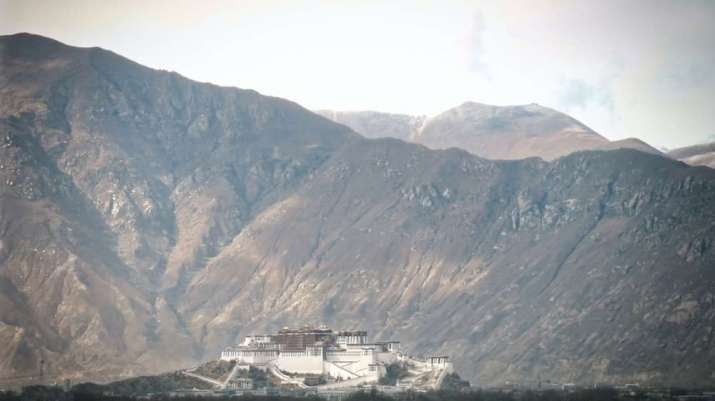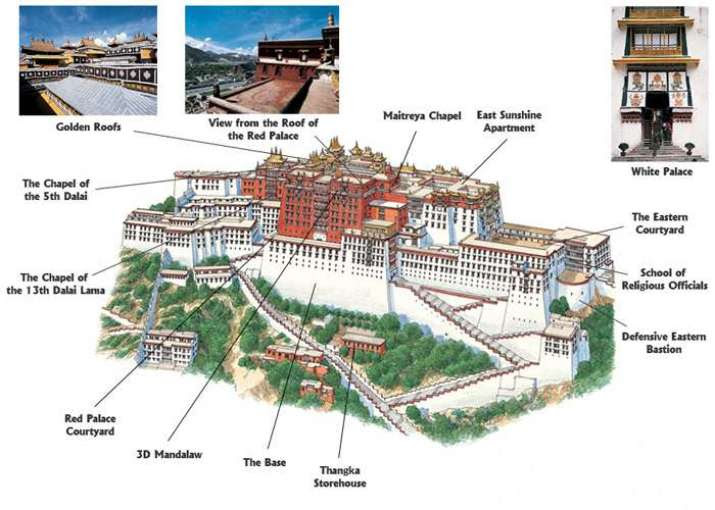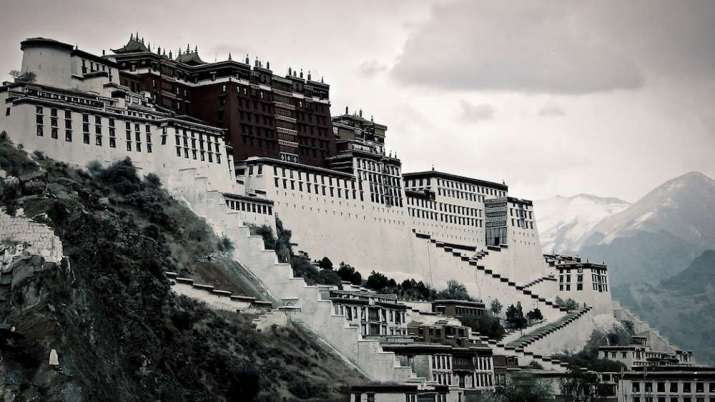By Shyamal Sinha

The Potala Palace in Lhasa, Tibet Autonomous Region, China was the residence of the Dalai Lama until the 14th Dalai Lama fled to India during the 1959 Tibetan uprising. It is now a museum and World Heritage Site.
The palace is named after Mount Potalaka, the mythical abode of the bodhisattva Avalokiteśvara..
A “large-scale” 10-million-yuan (US$1.5 million) renovation project is planned for Tibet’s iconic Potala Palace, Chinese state media announced. The initiative, approved by the State Administration of Cultural Heritage (SACH), will focus on preserving the palace’s gold-plated roof and improving onsite security and surveillance systems at the complex, Xinhua News Agency reported.
Sitting atop Red Mountain in the center of the Lhasa Valley at an altitude of 3,700 meters, the Potala Palace, named after Mount Potalaka, the mythical abode of the bodhisattva Avalokitesvara, was originally constructed during the 7th century and has since undergone several major reconstructions. Considered a masterpiece of Tibetan architecture, the complex is a major landmark and symbol of Tibetan Buddhism because of its central role in the traditional administration of Tibet and remains a major pilgrimage site for Tibetan Buddhists. The existing structure, which was listed as a UNESCO World Heritage Site in 1994, was completed in 1694 following a 45-year construction effort initiated by the 5th Dalai Lama, and later expanded to its current size by the 13th Dalai Lama in the early 20th century.

An official from the SACH noted that the renovation project would focus on protecting and extending the life of the palace’s ornate roof, which has been damaged by prolonged exposure to the harsh Himalayan climate. The SACH is an administrative agency under the Ministry of Culture charged with the management and development of museums, and the protection of sites and relics of national cultural significance.
Originally the official winter residence of the Dalai Lama, the Potala Palace complex, which comprises more than 1,000 rooms and halls spread over 13 floors of the Red and White Palaces and numerous chapels and ancillary buildings, has since been converted into a public museum housing 698 murals, nearly 10,000 thangkas, some 10,000 shrines, and more than 200,000 statues, carpets, canopies, curtains, porcelain, jade, gold and silver objects, as well as an extensive library of sutras and historical documents.

The imposing walls, gates, and turrets, constructed from rammed earth and stone, are built to withstand earthquakes as the Himalayan region is prone to seismic disturbances. The White Palace houses the main ceremonial hall containing the throne of the Dalai Lama, with his private residence and audience hall at the uppermost level. The Red Palace, which contains gilded burial stupas of past Dalai Lamas, is devoted to Buddhist study and prayer, comprising halls, chapels, libraries, as well as smaller galleries and passages. Situated in the west of the complex is Namgyel Dratshang, the private monastery of the Dalai Lama.
The nearby 7th century Jokhang monastery, considered the most sacred Buddhist temple in Tibet, and the 18th century Norbulingka, the former summer residence of the Dalai Lamas, were added to the UNESCO World Heritage Site in 2000 and 2001, respectively.
The palace is the most popular and recognized tourist attraction in Tibet: an estimated 1.37 million domestic and international tourists visited the landmark in 2016, according to Xinhua. Earlier this year, four squat toilets built some 300 years ago and located at either end of the complex were replaced by modern washroom facilities inside wooden structures designed to blend in with architecture of the neighboring buildings. The news agency stated that the central government has spent close to 3 billion yuan (US$455.9 million) protecting the cultural heritage of the Tibet Autonomous Region over the past two decades.
Tradition has it that the three main hills of Lhasa represent the “Three Protectors of Tibet”. Chokpori, just to the south of the Potala, is the soul-mountain of Vajrapani, Pongwari that of Manjusri, and Marpori, the hill on which the Potala stands, represents Avalokiteśvara.












